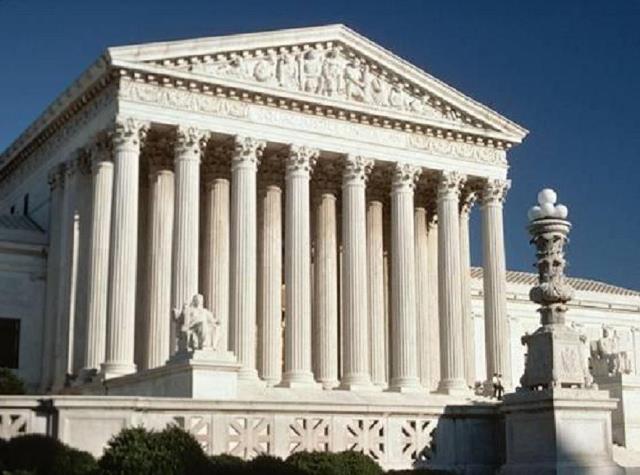
sThese are notes for a class in my Culture and Communication course. This is the fourteenth in a series of lectures on the most powerful critiques of structuralist thinking about cultural patterning and systematicity in interaction.
Required reading:
- Drummond, Lee American dreamtime. Lanham, MD: Littlefield. Chapters 1, (2), 5, 7, 8
- Ducille, Ann "Dyes and dolls." Differences 6: 46-68. 1994
| Transition notes |
|---|
The contemporary conversation about "culture" is a debate
around hegemony and local transformation, around
In other words no cultural analysis is valid if it does not show how a practice is both a product of hegemonic forces, and transformative (deconstructive and reconstructive) of these forces. How does this relate to communication theory? We can go back to Dewey but with communication specifically understood as having to do with the "withness" of human life (leaving aside any hypothesis about consensus, sharing or sameness) and with the pragmatic reality that life is about making (constructing) the world. In this construction, moving information from A to B is but a small subtask. What we are interested is in how the conditions of the task are constructed and how it is actually carried out. From this perspective action is communication, culture is text. But this does not collapse the study of culture/communication into literary criticism since culture/text is action and action produces things.
|
From Rambo to Star Wars towards a different take on the phenomenon of popular culture;
- from popular culture as carnival, improvised production, and an aspect of the search for unofficial pleasures
- to representations of the dreadful--that which produces dread in human beings both because of our anchoring in "nature" (ecology, biology) and "culture" (history, arbitrariness, hegemony, etc.).
In Drummond's view culture is not to be approached as a solution to our problems, or about the activity of "giving meaning" in the attempt to tame (domesticate) our condition. Rather it is to be approached as the continuing reconstruction of the
awe-ful ("awe": inspiring and terrible)
as older reconstructions reveal their power over humanity in their inevitable, even if unintended consequences.
- Myths of machines:
- The centrality of myth (Drummond 27-29)
- from myth as falsified statement
- to myth as discourse about what is most problematic with human life and beyond rational analysis
- popular meta-physics
- The need to understand myth as myth (Drummond 32ff)
- myth is not a reflection of something else
- myth is not a distortion of something else
- myth is directly constitutive of the world human beings inhabit
"the fundamental nature of culture ... as a creative, generative system that does far more than endlessly stir its ashes by interpreting and reinterpreting itself. As a generative system, culture make things, and also makes things happen. (Drummond p.52)
I have argued throughout this book that myth, which is simply a shorthand for the culture-generating faculty of the (for now) human mind, operates by subjecting our most cherished ideas to stress along the several semiotic dimensions that intersect to form semiospace. (p. 172)
- We are talking here about "myth" in a broad sense, involving not only narratives ("in the beginning God created...") but also all
forms of human performances, including all the arts and, if one follows
Lévi-Strauss and Drummond, every aspect of human action (greetings as "myth").
- note the correspondences between Drummond and Miller or Myerhoff.
- note how much farther he goes:
- culture is not "text," rather text is a form of "culture" understood as the sense-provoking struggle to make human life out of an environment of bodily functions, stones and plants, machines and other human beings arranged in particular ways.
- Drummond emphasizes the possibilities in myth but, by referring us to Lévi-Strauss, also points at the constraints
(hegemony?), that is the elements out of which the myth is made.
- Other interesting analyses of movies as practical philosophy or myth see S. Cavell's Pursuits of Happiness (1981) or W. Wright Six guns and society: A structural study of the Western (1975)
- The centrality of myth (Drummond 27-29)
- Making races out of the diversities in human phenotypes

- arbitrariness: from words and mental representations (Saussure and signs) to discursive practices and experience.
- Ducille on race, color and "self" and as person with race and color: what would be the color of a doll that would look "like me" as this would be stated
- by a commercial enterprise, (e.g., most recently, American Girl and "Just Like You® dolls")
- by a person identifying with a racial group,
- by a person looking into a mirror
- by a young girl not yet caught with the meta-discourses of racial representation
- Representation and legitimate
authority, interpretation, education?:
- the dolls in Brown vs. Board of Education
- and half a century later
- a movie by Davis (a high school student in New York, 2007) [through youtube]
- reactions by a blogger and a newsreport
Some questions
(in the context of this course)- In what ways could the "Declaration of Independence" be considered a "myth."
- How would you color (engender) Humpty Dumpty (or R2D2, etc.)? Why?
- What might Rambo be a myth "of"? (the Matrix? Lost?)
- what other interpretations might there be to the "doll experiment" (as reported)?

 The Supreme Court as a major object in the life of all Americans, as well as an object and a discourse.
The Supreme Court as a major object in the life of all Americans, as well as an object and a discourse.
